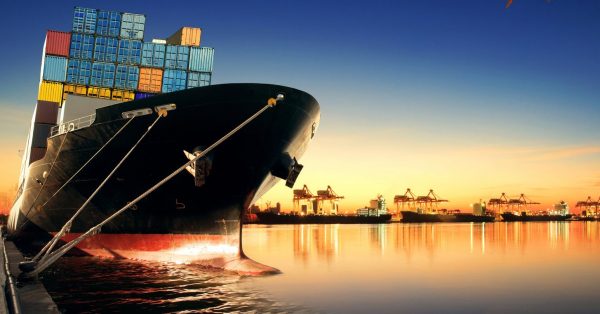In the latest issue of its Safety Digest, UK MAIB describes how a Ro-Ro ship blacked out and lost propulsion, when a crewman accidentally knocked the main CO2 distribution valve, after disconnecting the air hose. UK MAIB provides a description of what happened and important lessons learned to prevent similar accidents in the future.
A ro-ro ferry carrying 52 passengers blacked out and lost propulsion when on passage. A crewman had been using an air hose during deck maintenance work. Although several compressed air hose connection points were distributed throughout the ship, the crewman opted to use a connection point in the CO2 room housing the CO2 cylinders for the fixed extinguishing system. Te door to the CO2 room was secured by a combination padlock set to the ferry’s common access code.

After the crewman finished his work on deck, he returned to the CO2 room to disconnect the air hose. However, having knelt to disconnect the hose, he inadvertently knocked the main CO2 distribution valve as he stood up. The valve was moved only slightly, but this was suficcient to momentarily activate the CO alarm and to trigger shutting down the engine room fuel supplies and booster pumps. As a result, the ferry’s main engines shut down and the shaft generator stopped. Fortunately, the ferry was in open water and trafic was light. No CO2 was discharged into the engine room.
As power was lost, the emergency generator started and the crew were swift to implement the ferry’s post-blackout checklist. Power was quickly automatically restored via the power management system and the main engines were brought back online. The timely identification and rectifcation of the problem enabled the ferry to continue on its voyage with minimal fuss. Many passengers were not even aware of the disruption to the power supplies.
Following the incident, security of the access to the CO2 space was improved. The compressed air hose connection inside the space was also blanked of to control its use.

1. Spaces on board ships with restricted access, such as CO2 rooms, are kept locked and are marked with appropriate and applicable warnings posted on the doors to protect both individuals and the ships. However, signs and warnings can be ignored. Only good security can prevent unauthorized entry, even if well-intentioned.
2. Air hose connections inside CO2 rooms are fitted to enable the CO2 system to be ‘blown through’ periodically during maintenance. They might be near and convenient but they are not intended for general use.
3. When working adjacent to any form of control, such as a valve, lever or button, the danger of moving that control is always a possibility. Remain vigilant, and where critical, hazardous or safety related equipment is concerned, always follow onboard procedures with regard to permits to work etc. but also consider the use of additional precautions such as physical barriers and isolations.





























































